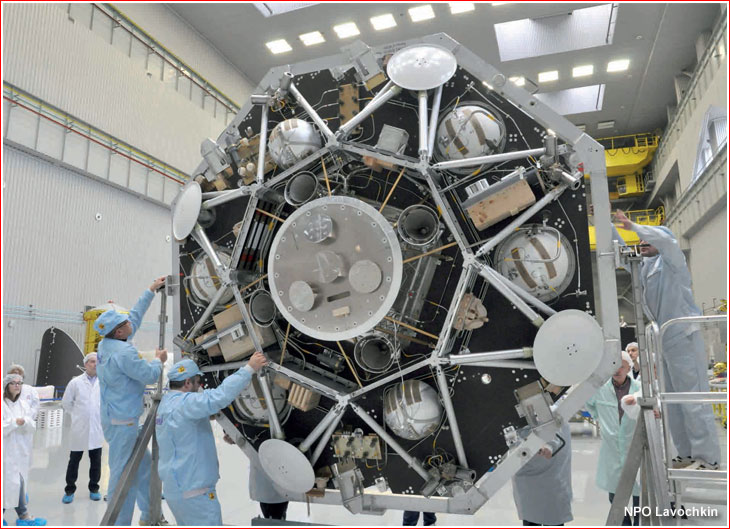 George1 Sun Jan 28, 2018 1:46 am
George1 Sun Jan 28, 2018 1:46 am
Launch of Russia’s lunar landing module scheduled for 2019
Russia plans to dispatch the Lunar-25 research landing module to the Earth’s natural satellite in 2019, the Luna-26 orbiter in 2021 and the Luna-27 lander in 2022
MOSCOW, January 25. /TASS/. The launch of Russia’s Luna-25 lunar landing station is scheduled for 2019, with no delays in the timeframe of the mission’s commencement, the Lavochkin Research and Production Association (the lander’s manufacturer) told TASS on Thursday.
"Under the schedule, the launch of the Luna-25 mission is planned for 2019," the Lavochkin Research and Production Association said.
Some media outlets reported on Thursday that the launch of the Luna-25 lander had allegedly been rescheduled for 2020.
As was reported earlier, Russia plans to dispatch the Lunar-25 research landing module to the Earth’s natural satellite in 2019, the Luna-26 orbiter in 2021 and the Luna-27 lander in 2022.
The Luna-25 project aims to launch an automatic probe for research in the Moon’s South Pole. The module is expected to land in the Boguslavsky crater to analyze the composition of regolith, the lunar dust, carry out stereo-photography for preparing the surface’s 3D map and identify the lander’s coordinates with millimeter accuracy using a laser angled reflector.
The last Soviet lunar mission was dispatched in 1976 when the Luna-24 probe made a soft landing, took soil samples and returned them to the Earth.
Two possible sites for Luna-25 probe’s landing
Russian scientists have chosen two possible sites for the Luna-25 research mission to land on the Moon’s surface, the press office of the Space Research Institute at the Russian Academy of Sciences said.
"Overall, two landing sites were chosen in accordance with engineering and scientific data. These are the basic area located to the north of the Boguslavsky southern polar crater with the coordinates of about 69.5 degrees south latitude and 43.5 degrees east longitude, and the reserve area to the southwest of the Manzinus crater with the coordinates of about 68.8 degrees south latitude and 21.2 degrees east longitude, correspondingly. The delay in the time of landing in the reserve area is about two days compared to the landing in the basic area," the Institute said.
The Boguslavsky crater that was used as a model to simulate landing was not included in the list of favorable landing sites, the press office said.
The scientists were looking for landing areas using maps compiled on the basis of data of the US Lunar Reconnaissance Orbiter, including on the basis of data of the LAND neutron detector developed by the Institute.
"The descent probe will land under the scenario of the last Soviet landing missions, i.e. the module will move along the low polar orbit around the Moon and will then decelerate and make a vertical descent. Compared to the landings of Soviet automatic probes, the last of which took place in 1976, the Luna-25 lander will for the first time in the history of cosmonautics be sent to the Moon’s polar area," the Institute said.
The conditions of the module’s descent and work on the Moon’s surface have set specific engineering requirements for the landing areas. The surface slope should not exceed 7% and the illumination by the Sun should be no less than 40% of the lunar day and the space vehicle’s constant radio-visibility from the Earth should be ensured, the press office said.
"From the viewpoint of the mission’s scientific goals, the selected areas should have a sufficient high content of hydrogen in the substance, which indicates the present of frozen water in the soil," the Institute said.
More:
http://tass.com/science/986909






 s.
s.